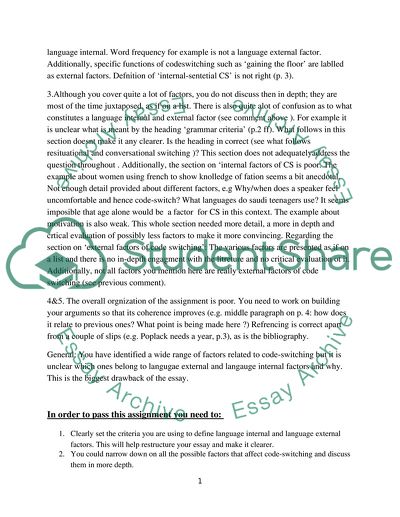Cite this document
(Language-External and Internal Factors Affecting Code-Switching Assignment, n.d.)
Language-External and Internal Factors Affecting Code-Switching Assignment. Retrieved from https://studentshare.org/education/1739705-applied-linguisticsissues-in-bilingualismwhat-are-the-language-external-and-language-internal-factors-affecting-code-switching-discuss-the-interplay-between-exogenous-and-endogenous-factors
Language-External and Internal Factors Affecting Code-Switching Assignment. Retrieved from https://studentshare.org/education/1739705-applied-linguisticsissues-in-bilingualismwhat-are-the-language-external-and-language-internal-factors-affecting-code-switching-discuss-the-interplay-between-exogenous-and-endogenous-factors
(Language-External and Internal Factors Affecting Code-Switching Assignment)
Language-External and Internal Factors Affecting Code-Switching Assignment. https://studentshare.org/education/1739705-applied-linguisticsissues-in-bilingualismwhat-are-the-language-external-and-language-internal-factors-affecting-code-switching-discuss-the-interplay-between-exogenous-and-endogenous-factors.
Language-External and Internal Factors Affecting Code-Switching Assignment. https://studentshare.org/education/1739705-applied-linguisticsissues-in-bilingualismwhat-are-the-language-external-and-language-internal-factors-affecting-code-switching-discuss-the-interplay-between-exogenous-and-endogenous-factors.
“Language-External and Internal Factors Affecting Code-Switching Assignment”, n.d. https://studentshare.org/education/1739705-applied-linguisticsissues-in-bilingualismwhat-are-the-language-external-and-language-internal-factors-affecting-code-switching-discuss-the-interplay-between-exogenous-and-endogenous-factors.


